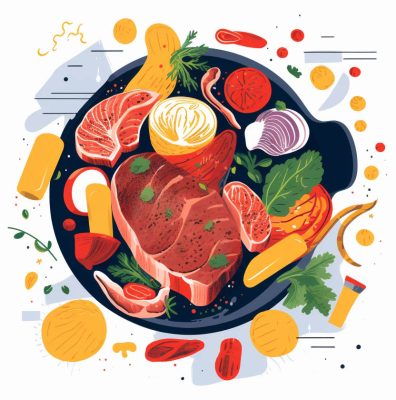Introduction #

Recipe schema is a type of structured data markup used to provide search engines with detailed information about recipes, such as their name, author, ingredients, cooking time, and nutritional information.
By implementing recipe schema on their web pages, food bloggers, recipe websites, and cooking enthusiasts can improve the visibility and relevance of their recipe-related content in search results, as well as provide users with more comprehensive and accurate information about their recipes.
Recipe schema can also enable search engines to display recipe-related information in more engaging and informative ways, such as in the Google Recipe carousel or rich snippets. Moreover, recipe schema can help attract more traffic to recipe-related content and enhance the user experience.
Usage #
To implement the Recipe schema on your website, there are two methods available. The first approach is to access the “Items” section and create one or more recipe schemas, manually input the relevant information, and assign each schema to the desired page.
However, if your website utilizes a custom post type for recipes, then the second method should be used. In this case, navigate to the “Post Types” section, select your Recipe post type from the dropdown menu, and then choose “Recipe” from the item dropdown. This will assign the recipe schema to every post of the Recipe custom post type. A blank recipe schema form will appear, allowing you to set the defaults for the automatic schema that will be generated for each Recipe post. Dynamic values can be utilized for this purpose. For example, right click on the title field and select Dynamic Value. You get a list of all the available dynamic values you can use. Select Post Title. This way, you assign each Recipe post’s title to the title field of the automatic schema. Any meta values that are used on Recipes posts, will also appear on the dynamic values list.

Guided Recipes #
Based on how you mark up your content, your recipes can be eligible for the Guided Recipes enhancement. This enables the Google Assistant to guide users through your recipes on Google Home and smart displays.
There are a some additional properties that are required for Guided Recipes. Make sure you add Ingredients and Instructions information. If you add videos to your schema, the contentUrl property is required for the video, but Actus Deep Schema takes care of this, you just need to add video to your recipe content or your schema form.
For more information about recipes on the Google Assistant, learn how you can build Actions from web content.
Cooked Plugin #
If you are using the Cooked plugin to manage your recipes, you get a default recipe schema form with it’s fields feeded with the proper data from Cooked. This means that you get an automatic recipe schema attached to every recipe page with full information about your recipe. You can always adjust manually that schema for desired pages.
Properties #
info #
In this section you define the main info for a recipe. Besides the name and a description for the dish, you can use the keywords, cuisine and categories properties to accuratelly describe the type of the dish. The suitable for diet property indicates a dietary restriction or guideline for which this recipe or menu item is suitable, e.g. diabetic, halal etc. You can also define the time needed to prepare the ingredients and cook the dish. Use either total time or a combination of preparation and cook time.
recipe #
In the yield property you define the quantity produced by the recipe. Specify the number of servings produced from this recipe with just a number. If you wish to use a different unit (for example, number of items), you may include additional yields. This is required if you specify any nutritional information per serving (such as nutrition-calories).
Example:[ “6”, “24 cookies” ].
For the ingredients used in the recipe:
– Include only the ingredient text that is necessary for making the recipe.
– Don’t include unnecessary information, such as a definition of the ingredient.
In the instructions property you specify the steps needed to make the dish and in the nutrition property you define any nutrition information.
media #
Here you can define images of the completed dish and a video depicting the steps to make the dish, if available.
extra #
In this section you can set extra information about the recipe such as the date published, the authors, languages, rating etc.
reviews #
Reviews and ratings of the recipe.




